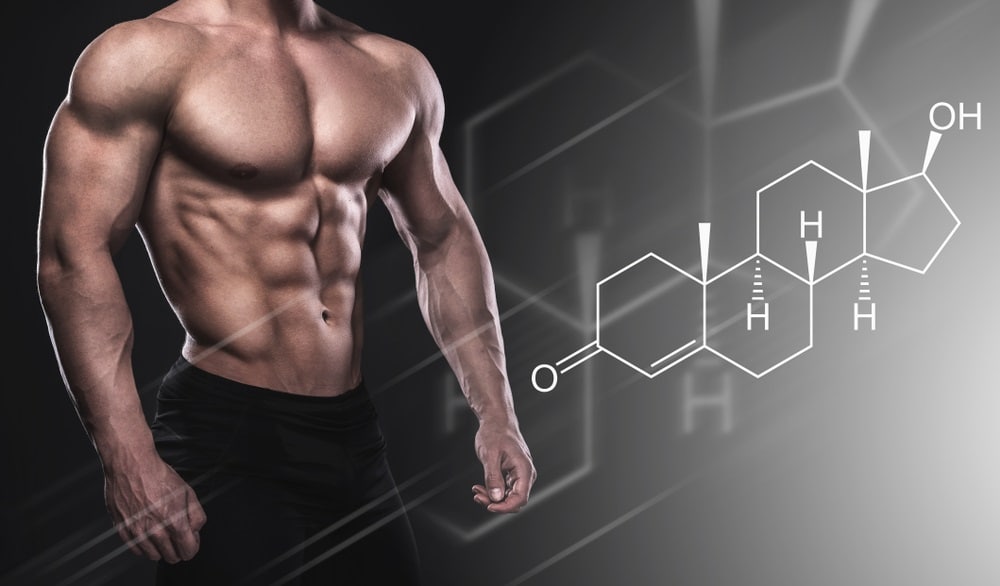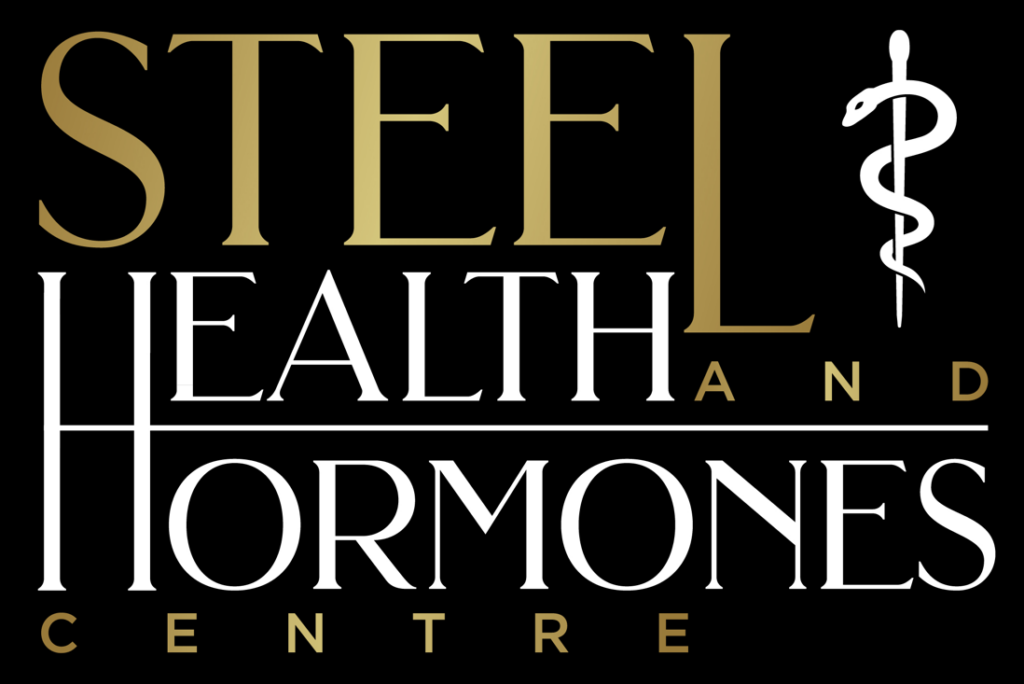Many clinics prescribe aromatase inhibitors (AI) as part of a cookie cutter testosterone replacement therapy protocol. We’ve taken numerous TRT patients from competing clinics because the patient doesn’t feel as good as he thinks he should. The culprit could be insignificant dosing, suboptimal frequency, or aromatase inhibitors. At Steel Health and Hormones Centre, my HRT clinic with locations in Allegheny and Westmoreland County Pennsylvania, we can see use-cases of AI’s but we believe they should be used sparingly and only in certain individuals. If you’re a person who’s wondering if AI’s are right for your TRT protocol, this article is for you. In this article we’re going to take a deep dive into the benefits of estrogen in the male body and the potential drawbacks of lowering estrogen indiscriminately. We’re also going to look at when lowering estrogen through an AI is warranted.
I want to preface this post the way I always do. I am not a medical doctor and this article should not take the place of qualified medical supervision. Hormone replacement therapy and the use of aromatase inhibitors should be monitored closely by a medical professional and if you’re not under the treatment of a qualified medical professional I strongly encourage you to seek council. This article is not meant to treat, diagnose, or prevent medical conditions. This article is not to take the place of medical advice presented to you by a qualified medical professional.
Now let’s get into this…
In order to understand how AI’s work, it’s first important to understand what the aromatase enzyme does in the body. In short, aromatase works as a catalyst to synthesize androgens into estrogens. The main mechanism of action is to turn testosterone into estradiol and androstenedione into estrone.
There are two classifications of aromatase inhibitors, steroidal and non steroidal. An example of a steroidal aromatase inhibitor is exemestane. Exemastane binds to the aromatase enzyme and renders it permanently inert. Conversely, we have non steroidal aromatase inhibitors like letrozol and anastrozole. These 2 medications bind to the aromatase enzyme in a similar fashion and render them inert. Since they don’t bind to the aromatase enzyme permanently, succession may allow some of the enzyme to “free up” and convert androgens into estrogens. Another potential difference may be that steroidal AI’s may exhibit some androgenic effects. From a clinical
perspective, we see anastrozole as lowering estrogens the least, while letrozole and exemestane lowers estrogen about the same.1
In my opinion, AI’s should be used sparingly. Estrogens are important in men, just as they are in women. In the male body, estrogen is essential for libido, erectile function, and spermatogenesis. Estrogen appears to have an excitatory AND inhibitory effect on sexual function in men. This means that in some men, if estrogen is too high, it may exhibit a inhibitory effect on male sexual function, however, if estrogen is too low, it will also exhibit an inhibitory effect.2 In our clinic we see this exact phenomenon. Some men respond so poorly to AI’s that their libido is completely wiped out, even when concurrently administering TRT. Further, spermatogenesis is influenced by sufficient estrogen levels. If you’re a man who is trying to conceive on TRT by co- administering other medications like HCG, I would also take AI’s under extreme caution because you may be doing more harm to spermatogenesis than you think.
Outside of quality of life, estrogen has an important impact on male bone health. Low estrogen levels have been linked to osteoporosis in men.3 Although the levels required for men to maintain bone health and relatively low, I would still caution against indiscriminate AI use as every man responds differently to the medication. Some men will see a modest decrease in estrogen with AI use, where other men will see their estrogen drop into the single digits.
Lastly, I want to look at estrogen’s effect on the male brain. As indicated earlier, estrogen impacts male libido which is inextricably linked to the brain. In addition to libido, estrogen may play a role in short term memory formation and creativity. The study I’ll link below shows that introducing estrogen therapy in men will result in increased creativity and verbal memory. I would be seeing beyond the data to say that AI’s would decrease creativity and verbal memory in men, but I do think the study indicates that the roles of estrogen in the male brain are multifactorial and not well understood and lowering estrogens with things like AI’s should be done with extreme caution.4
With all of that stated, there are some men who experience moodiness, decreased libido, excessive water retention, and gynecomastia (growth of breast tissue) which are classic signs of high estrogen. For these men, I would first caution them to take time with their therapy. Sometimes these effects subside as the body reaches homeostasis and only exist when TRT is started and both testosterone and estrogen begin to rise. However, there are some men who do need to manage estrogen even after the 6 week mark when their body reaches homeostasis. I’ll now provide a framework to follow BEFORE administering AI’s and only after these steps are undertaken (or while the steps are being undertaken). Also, I encourage men to join a clinic like Steel Health and Hormones where we corroborate your symptoms with bloodwork. You should be receiving comprehensive bloodwork at least twice per year, and even more often when you’re first starting treatment.
For men having classic symptoms of high estrogen, and their bloodwork shows an estrogen level greater than 1/20th of their testosterone levels, here are steps to follow BEFORE starting an AI.
First, increase the frequency of your testosterone administration. Some clinics will only administer testosterone once per week or even once every 2 weeks. In our experience, this leads to an increase in aromatase activity and consequently more estrogen then the same dose administered at least twice per week.
Secondly, lose body fat. There is a direct link between adipose tissue and an increase in aromatase activity.5 Most men should be below 20% body fat. This is extremely attainable for most men with a consistent calorie deficit and consistent exercise. If you’re getting estrogenic side effects and you’re over 20% body fat, a simple fix could be getting leaner. For men struggling to lose weight, we also offer powerful weight-loss medications like semaglutide and tirzepatide here at Steel Health and Hormones Centre.
Lastly, you could lower the dose of testosterone. I know this sounds blasphemous to men on TRT but the goal is health optimization. If you’re taking medication to chase the side effects of other medications, you could be doing more harm than good.
So when should a man use an AI during TRT?
We can prescribe AI’s for men in several different cases. The first is that they’re just an aromatase hyper responder. If a man is lean, injects testosterone twice per week, and is dialed in from a testosterone perspective where less testosterone would result in a return of symptoms, then an aromatase inhibitor is on the table. We would use a low dose prescribed once or twice per week to allow the symptoms to subside. We would also corroborate symptom relief with blood work. We don’t want the estrogen to crash into single digits. We find most men feel best when their testosterone is between 1/20-1/25th of their testosterone.
Another use-case for aromatase inhibitors during TRT is for men who are obese but in the process of losing weight. If a man is attempting to lose body fat, they may need to be on a small dose of an AI to avoid excessive estrogen build up as a result of their excessive fat mass. For these men they should focus on using the testosterone, semaglutide/tirzepatide in addition to healthy lifestyle changes to lose fat mass. The goal should be to use the lowest dose of AI necessary to keep estrogenic side effects in check as the patient loses weight. After sufficient weight loss is achieved, the goal should be to come off of the AI.
In conclusion, TRT is a life changing therapy for androgen deficient men. Part of the benefits of TRT is testosterones conversion to estrogen. Estrogen has a myriad of benefits in the male body including bone health, brain health, and sexual function. Controlling estrogen through aromatase
inhibitors should be done with extreme caution and should NOT be prescribed as a blanket adjunct medication to testosterone. Use cases of AI’s include aromatase hyper responders and obese male patients on TRT. Remember, you should always be under the care of a qualified medical professional when administering hormone therapy. This article is not intended to diagnose, treat, or prevent medical conditions.
If you’re interested in hormone replacement therapy from a qualified team of professionals, fill out a contact form down below and someone will be in touch within 24 hours. If you think someone you know should read this, please share this article with them.
- https://www.ncbi.nlm.nih.gov/pmc/articles/PMC3068499/
- https://pubmed.ncbi.nlm.nih.gov/26908066/#:~:text=Traditionally, testosterone and estrogen have,, erectile function, and spermatogenesis.
- https://www.jci.org/articles/view/85006#:~:text=Estradiol deficiency disrupted cortical microarchitecture,decreases in BMD in men.
- https://academic.oup.com/jcem/article/107/2/e582/6371793
- https://pubmed.ncbi.nlm.nih.gov/11399122/#:~:text=The increase in adipose tissue,develops for leptin and insulin.



